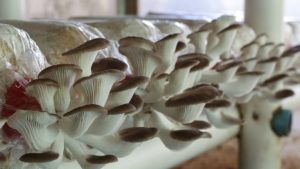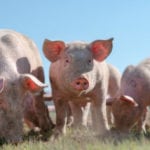 Movies and TV
Movies and TV  Movies and TV
Movies and TV  Creepy
Creepy 10 Lesser-Known Shapeshifter Legends from Around the World
 Animals
Animals 10 Amazing Animal Tales from the Ancient World
 Gaming
Gaming 10 Game Characters Everyone Hated Playing
 Books
Books 10 Famous Writers Who Were Hypocritical
 Humans
Humans 10 of the World’s Toughest Puzzles Solved in Record Time
 Mysteries
Mysteries 10 Scientific Mysteries We Don’t Fully Understand
 Weird Stuff
Weird Stuff 10 Celebrities Who Have Admitted to Alien Encounters
 Our World
Our World 10 Surprising Secrets of Notre Dame Cathedral
 Miscellaneous
Miscellaneous 10 Intriguing Origins of Popular Carnival Rides
 Movies and TV
Movies and TV 10 Actors Dragged out of Retirement for One Key Role
 Creepy
Creepy 10 Lesser-Known Shapeshifter Legends from Around the World
 Animals
Animals 10 Amazing Animal Tales from the Ancient World
Who's Behind Listverse?

Jamie Frater
Head Editor
Jamie founded Listverse due to an insatiable desire to share fascinating, obscure, and bizarre facts. He has been a guest speaker on numerous national radio and television stations and is a five time published author.
More About Us Gaming
Gaming 10 Game Characters Everyone Hated Playing
 Books
Books 10 Famous Writers Who Were Hypocritical
 Humans
Humans 10 of the World’s Toughest Puzzles Solved in Record Time
 Mysteries
Mysteries 10 Scientific Mysteries We Don’t Fully Understand
 Weird Stuff
Weird Stuff 10 Celebrities Who Have Admitted to Alien Encounters
 Our World
Our World 10 Surprising Secrets of Notre Dame Cathedral
 Miscellaneous
Miscellaneous 10 Intriguing Origins of Popular Carnival Rides
10 Mind-Boggling Attempts to Grow Food in Space
The space race is back like never before. National agencies and private companies are competing to explore the cosmos. Many are planning long-haul missions to Mars, jostling to be the first to set foot on the red planet.
But flying to Mars would take years. One of the questions currently puzzling space agencies is how to keep astronauts fed on such long journeys. In the ’60s and ’70s, astronauts made do with freeze-dried packages. But their missions lasted months—and even then, it wasn’t particularly pleasant.
Luckily, teams of free-thinking culinary experts are coming up with inspired ways to avoid monotonous, often non-nutritious space gruel. Here are ten of their most brilliant concoctions.
Related: 10 Experiments in Space That Seem Pointless
10 Farmbots That “Smell” How Their Plants Are Growing
The ARC Centre of Excellence in Plants for Space is testing various ways to grow food in space. Food that is actually varied and nutritious. Not just the same old freeze-dried space gruel again and again, which is the only thing astronauts currently have to eat.
One method is by using farmbots—programmable machines that carry out the tasks of a regular farmer back on Earth. The green-fingered robots plant seeds, control irrigation, treat crops with disease-resistant spray, and harvest them when they’re fully grown. They’re equipped with digital sensors and AI, which help them keep track of the plants’ growth.
Scientists working on the project in Melbourne have even devised a component known as an e-nose. By “smelling,” the e-nose picks up on scents given off by plants to monitor their needs. And that’s not all. The team is said to be using facial recognition technology to work out what the astronauts make of their food and see how microgravity impacts the taste.
So far, the technology is still on terra firma. But with a recent resurgence in space travel and agencies pushing for longer missions, maybe we’ll see farmbots take off in years to come.[1]
9 3D-Printed Pills Inspired by Willy Wonka
Farmbots aren’t the only thing that the Australian project is working on. The team has several ideas for making good-quality food while sailing through the skies. Another is via microencapsulated pills that they can 3D print, like something out of Willy Wonka’s chocolate factory.
In the Roald Dahl classic, Wonka distills a three-course meal into a stick of chewing gum. Each flavor hits the tongue at a different point in time. In a similar idea, the Melbourne scientists take organic material and compress it into a pill. The tastes are released over a period to recreate the sensation of a meal.
These multi-flavor pills are still very much in the works. As of yet, there’s no sign of them turning anyone into a giant blueberry, which is a positive start.[2]
8 3D-Printed Steak Made from Plastic Waste
Sticking with the idea of 3D printing now for a project that turns plastic waste into edible treats. The idea is that people aboard the space mission collect plastic junk, shred it, and then feed it into a bioreactor. Here, the waste comes into contact with engineered bacteria. The microbes gobble up the excess plastic and convert it into biomass.
It was engineer Anja Contractor who came up with the bizarre idea. His company, Beehex, develops 3D food printer systems. Beehex is funded by NASA and the U.S. Army, as well as others. In 2023, Contractor demonstrated the process using a shipping container. As he told reporters, “If you want to create steak out of plastic, the entire mechanism on one side of this container will be able to produce steak out of plastic—or chicken breasts.”[3]
7 Veggie on the International Space Station
Given that it holds six plants at a time, NASA’s Vegetable Production System will never grow enough to feed the entire International Space Station (ISS). But the project, nicknamed Veggie, gives scientists the rare opportunity to study gardening in microgravity. It also allows astronauts to add a little fresh food to their mostly freeze-dried diets.
Veggie is about as big as carry-on luggage. Instead of soil, plants grow in pillows of fertilizer and clay. LEDs provide light. So far, crews on the ISS have grown various types of lettuce, mustard, kale, and Chinese cabbage, among others. The cosmic gardeners hope to branch out into other plants, like tomatoes and peppers. Plus, plants like berries are rich in antioxidants, which help ward off the effects of radiation.[4]
6 Multi-Story Vertical Farming
At the tail end of the 1990s, Columbia University researcher Dr. Dickson Despommier began working on vertical farms. The idea was similar to a multi-story building; only each floor would be a layer of crops. Splitting the yield into different sections means farmers can control the conditions for each plant.
Conditions on a space mission need to be carefully engineered for crops to grow, and there is little room in which to do it. These constraints mean that techniques like vertical farming are a game-changer for astronauts. But what about us on Earth? Scientists reckon we, too, could benefit from vertical farming. It uses less water and resources and crucially takes up less land than traditional farming.
One vertically farmed acre can produce the same amount of crop as four to six acres in the soil. They’re more sustainable, and the growing season lasts all year long. Looks like this out-of-this-world has uses closer to home than its creators imagined.[5]
5 Growing Cress in Moon Soil
In 2022, for the first time, scientists successfully grew plants in soil that came from the moon. Researchers at the University of Florida planted thale cress seeds in lunar soil and were delighted to see them sprout. They used samples collected from three Apollo missions in the late 1960s and early ’70s, along with a simulant control.
Even though the samples came from different areas of the moon, they all provided decent enough conditions for the cress to grow. That said, the cress grown in lunar soil was smaller and slower than the control group, and there were signs of stress. Nonetheless, the Florida team is delighted with their results, which could help pave the way for extended space travel. As Robert Ferl, who worked on the project, told reporters, “Showing that plants will grow in lunar soil is a huge step in being able to establish lunar colonies.”[6]
4 Artificial Burgers Made of Fungi
Space agencies are keen to invest in food solutions for extended space missions. In 2021, NASA and the Canadian Space Agency launched the Deep Space Food Challenge. They threw down the gauntlet for radical culinary scientists to come up with new ways to make food in space.
The second phase of the contest took place in Brooklyn in May 2023 and attracted a range of cutting-edge ideas for new astro edibles. One came from Kernel Deltech, a spin-off of food company Eternal Bioworks, who brought fried cheese and burger bites. The catch? Both were made from Fusarium venenatum, a fungus also found in Quorn.
The team devised a way to grow and harvest fungi in microgravity using compact bioreactors. This forms a gray powder rich in protein, which is transformed into snacks like cheese and burger bites.[7]
3 Solein: A Protein Powder Formed from Microbes
Kernel Deltech aren’t the only innovators taking part in the Deep Space Food Challenge (it wouldn’t be much of a challenge if they were). The Finnish company Solar Foods has developed a microbe-based powder called Solein (no, not Soylent Green—that’s made from people).
Solein is grown from edible bacteria that grow by metabolizing hydrogen gas. Life support machines create hydrogen as a by-product when they extract oxygen from water. The gas is usually thrown away, but Solar Food’s system uses it to grow its Solein protein powder. This powder, they say, can be turned into almost any food that the astronauts might want. Recently, they’ve been showing off their cutting-edge technique by making fortune cookies out of Solein.[8]
2 Growing Mushrooms through Artificial Photosynthesis

We’re back in the world of fungi with Nolux. True to its name (Nolux is Latin for “no light”), scientists working on the project have come up with a way to grow oyster mushrooms without sunlight. Their technique uses liquid hydrocarbon acetate, which can be produced on space missions by converting CO2 and water.
Amazingly, the original Nolux researchers weren’t looking to innovate food growth. Instead, they wanted to genetically alter algae to boost the production of biofuels. That turned out to be far too expensive. However, in the process, they laid the foundations for Nolux. The team says growing mushrooms with acetate in a 70-cubic-foot (2-cubic-meter) reactor could produce 18.7 pounds (8.5 kg) of food per day.[9]
1 Aleph Farms’ 3D-Printed Beef
September 2019 was a milestone in space food production. That month, scientists grew artificial meat in space for the first time using 3D-printed cow cells.
Israeli food company Aleph Farms developed the technique. To grow their faux beef, first, they extracted cow cells and transferred them to a “broth” of nutrients. Kazakhstan’s Soyuz MS-15 then flew vials of the broth and cell mixture up to the International Space Station. Russian cosmonauts fed the vials into a magnetic printer, which replicated the cells and created artificial “meat.” The beef samples came back to Earth a week later.
The experiment only produced a meager amount of meat, and the taste was hardly mouth-watering. Despite all that, Aleph Farms has proved that they can create meat under the harsh conditions of microgravity. This has all kinds of potential uses.
Yes, the technology might one day provide protein for astronauts on long-haul space missions, but it could also feed people here on Earth. Cultured meat uses ten times less land and water than livestock agriculture. With dwindling supplies of natural resources, Aleph Farms’ artificial steak could point to a more sustainable way to produce meat.[10]








